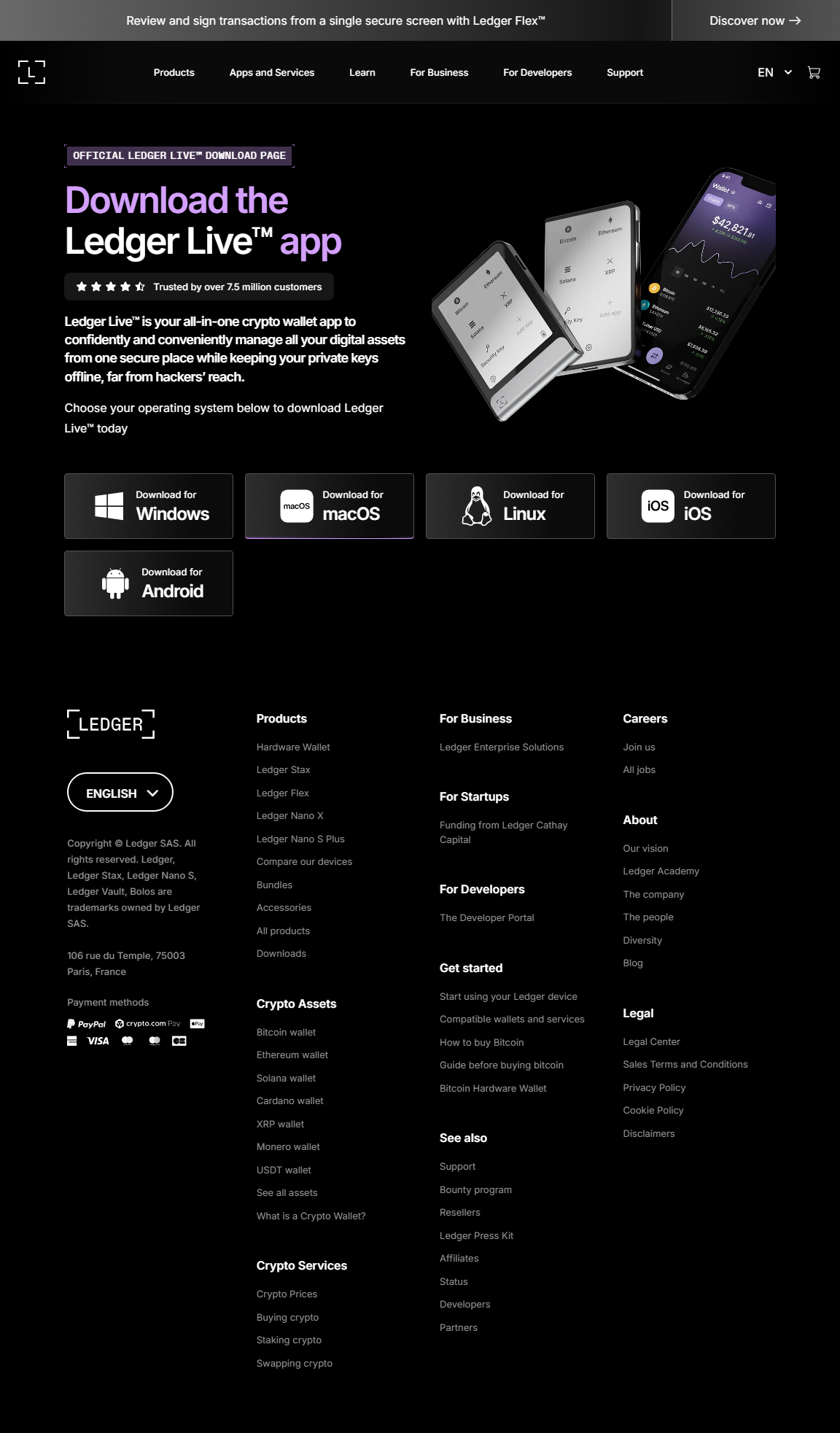Ledger Login: How to Access Your Wallet Safely & Confidently
Demystifying “logging in” with Ledger hardware wallets and Ledger Live — the right way, every time.
Why “Ledger Login” Feels Weird (Compared to Web2)
It’s natural to expect a “login screen” — username, password, maybe 2FA. But Ledger works differently. In Web3, especially with hardware wallets, the security model shifts. There’s no cloud account you log into; instead, you unlock your wallet through physical hardware and PIN.
Quick reality check: If you ever see a website asking you for your 24-word recovery phrase during “login,” that’s a major scam. Ledger’s login never requests that phrase online.
How Ledger Login Actually Works: Step by Step
On Desktop (Windows, macOS, Linux)
- Download & install Ledger Live from the official site.
- Connect your Ledger device via USB cable.
- Enter your PIN directly on the device to unlock it.
- Open or “add” supported accounts via Ledger Live.
- When you send funds or sign actions, confirm everything on the hardware.
On Mobile (iOS / Android with Ledger Nano X)
- Install Ledger Live from the official app store.
- Enable Bluetooth and pair your Nano X.
- Enter your PIN on the device to unlock it.
- Access your accounts via the mobile app.
- Every transaction still needs your physical confirmation.
In both cases, the “login” is really just the process of connecting, unlocking, and authorizing your hardware wallet via Ledger Live.
What Ledger Login *Does Not* Do
- 🛑 It does not ask you for your 24-word recovery phrase on any online form.
- 🛑 There is no web portal with username + password to access your funds.
- 🛑 Your private keys never leave your hardware device.
- 🛑 Ledger Live's password lock is local — not a backup of your keys.
Security Layers That Make Ledger Login Strong
- Hardware PIN: Only you (who knows the PIN) can unlock the device.
- Secure Element: Private keys are stored in a protected chip inside the Ledger.
- Transaction Confirmation: Even if your computer is compromised, no action goes through without your hardware confirmation.
- No Cloud Reliance: There is no central server storing your keys or login data.
Common “Login” Issues & How to Solve Them
Device Not Recognized or Detected
Try a different USB cable or port, reboot your computer or phone, and ensure your Ledger Live app is up to date.
Cannot Enter or Pass the App’s Password
Some users reported that after updating Ledger Live or due to bugs, the app's password may stop working. In such cases, resetting the local app data and re-adding your accounts (via your hardware device) solves the issue. :contentReference[oaicite:0]{index=0}
Bluetooth Won’t Pair (Mobile)
Unpair in your phone’s Bluetooth settings, restart both app and device, and reconnect via Ledger Live’s pairing flow.
Wrong PIN Entered Multiple Times
After 3 failed attempts, the device resets itself. You’ll need your 24‑word recovery phrase to restore access. Be extra careful with PIN entry.
⚠️ Beware: Phishing Scams & Fake “Login” Apps
There’s an alarming trend of fake Ledger apps circulating, especially on macOS — they prompt users to “re-login” by entering their 24-word phrase, which sends it straight to attackers. :contentReference[oaicite:1]{index=1}
Always verify the app’s origin, never enter your recovery phrase into software, and use only the official Ledger Live from ledger.com.
Tips to Make Ledger Login Smooth & Safe
- Enable **Password Lock** inside Ledger Live for app-level protection.
- Use biometric or fingerprint unlock on mobile, if available.
- Keep Ledger Live and firmware updated to avoid compatibility issues.
- On shared computers, always disconnect and close the app when done.
- Backup your 24-word recovery phrase securely — it’s your ultimate “login credential.”
Final Thoughts: Logging In Means Owning Access
“Ledger login” is not about usernames, passwords, or cloud accounts. It’s about you — the holder of the hardware, the PIN, and the recovery phrase. When you “log in,” you’re not entering a system; you’re unlocking your self-custody wallet.
Mastering this different mindset — one grounded in purpose, not convenience — is key to owning your crypto safely. Stay vigilant, stay updated, and always confirm everything on your hardware.
You hold your keys. You unlock your future.
